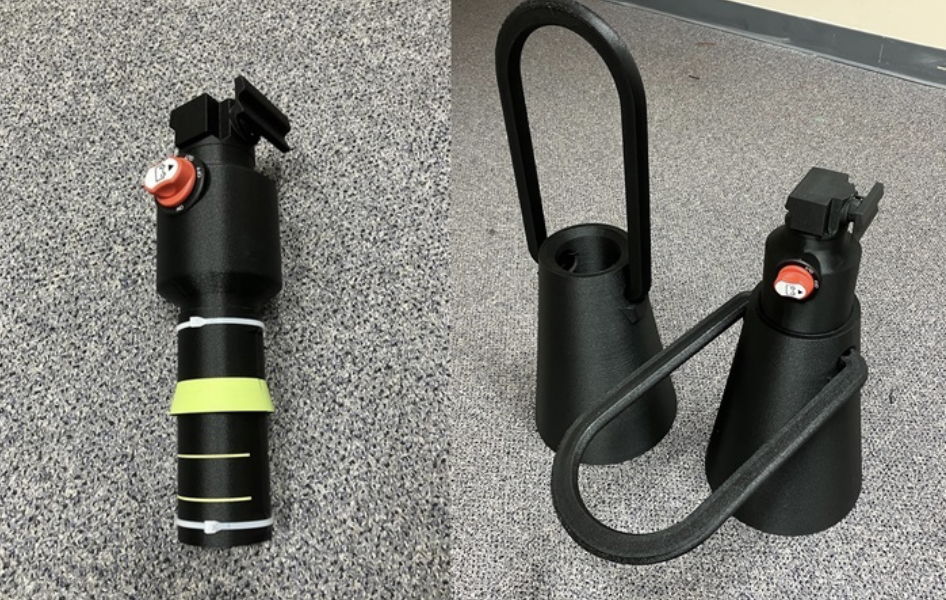Winter’s Garden
By Patience Strong
The garden sleeps beneath the frost,
Its summer treasures stilled and lost.
Yet in the silence, life persists,
Awaiting spring’s warm, gentle kiss.
Bare branches etch the pale-gray sky,
While whispers of the cold winds sigh.
Seedlings dream in earth’s embrace,
Of sunlight’s warmth and verdant grace.
Though winter casts a solemn hue,
There’s beauty in its frosted view.
For every garden needs its rest,
To wake renewed and at its best.
In December’s still and frozen hours,
We find the seeds of springtime’s flowers.
While winter may not be officially here, recent weather has sure let us know that it is coming. I’ve been busy moving some of my tropicals into either the house or the greenhouse. This is after replacing half of the greenhouse windows that were taken by the recent storm.
Most of these types of plants really don’t like temperatures below 50 degrees F., and you will be doing them a favor to get them into a protected area. Before you bring plants inside, inspect them for pests avoid infestations. Acclimate your plants by gradually introducing them to indoor conditions and increase humidity using a humidifier, or by placing plants on trays of water with pebbles. Try to keep them away from drafts and heating vents. Here’s a short list of some popular “tropical” plants that need special winter care and a few tips.
1. Hibiscus (Hibiscus rosa-sinensis): Move potted plants indoors before temperatures drop below 50°F. Provide bright, indirect light near a south-facing window. Water sparingly, allowing the soil to dry slightly between waterings.
2. Banana Plant (Musa spp.): Cut the plant back to about six inches if planted in the ground. Dig up the rhizome and store it in a cool, dark place (40–50°F). Potted bananas can be moved indoors to a bright, humid spot. Reduce watering significantly during dormancy.
3. Bird of Paradise (Strelitzia reginae): Bring indoors before the first frost. These thrive as houseplants. Place in a sunny location with temperatures above 60°F. Water moderately, reducing frequency during the winter months.
4. Bougainvillea (Bougainvillea spp.): Overwinter indoors if temperatures dip below 40°F. Place in a bright, sunny spot or use grow lights. Allow the soil to dry out slightly between waterings. And, expect some leaf drop—it’s normal in winter.
5. Elephant Ear (Colocasia/Alocasia spp.): If in-ground, cut back the foliage and dig up the bulbs. Store in peat moss or sawdust in a cool, dry location. Potted plants can stay indoors in a warm, sunny spot. Keep bulbs dry, but potted ones slightly moist.
6. Tropical Ginger (Alpinia and Hedychium spp.): Dig up rhizomes if planted outdoors and store in peat moss at 50–60°F. Indoor pots need indirect light and consistent warmth. Reduce watering but don’t let the rhizomes dry out completely.
7. Croton (Codiaeum variegatum): Move potted crotons indoors before the temperature falls below 55°F. Bright, indirect light and temperatures above 60°F are ideal. Keep the soil moist but avoid overwatering.
8. Anthurium (Anthurium andraeanum): Bring indoors for the winter as they cannot tolerate frost. Keep in a humid, warm location with filtered light. Water when the top inch of soil feels dry.
9. Tropical Ferns (e.g., Boston Fern, Maidenhair Fern): Move indoors or into a greenhouse before frost. High humidity and indirect light are essential. Keep the soil evenly moist but not soggy.
10. Plumeria (Frangipani) If potted, bring indoors and allow dormancy by reducing water. Store in a cool, dark place (50–60°F). Resume watering in spring as new growth emerges.
While we are on the topic of overwintering plants indoors, now would probably be a good time to discuss a plant’s need for light. We all understand that plants use light energy to drive photosynthesis, which creates sugars using CO2 and water. The details of all this can get very involved, but we don’t need to understand all the biochemistry in order to help our indoor plants thrive.
We can provide light from several different sources and it’s good to understand a bit about which work best. The first thing to understand is that plants do not utilize all of the light that hits their leaves. They use the red and blue wavelengths primarily, and the rest is reflected or lost as heat. This is why many grow lights appear purple. (Red + blue = purple)
There are several types of grow lights. Here’s a quick primer.
Fluorescent lights: Affordable and energy-efficient, great for starting seeds and leafy greens.
LED grow lights: Long-lasting, energy-efficient, and customizable to emit specific light spectrums (blue for growth, red for flowering/fruiting). These are most often available as red/blue mixtures or more rarely “full spectrum” white light. My personal opinion is that these are your best bets for low-cost, long-lived, energy efficient plant lights.
High-intensity discharge (HID) lights: These things are powerful, expensive and most often used by professional growers for large-scale operations.
Incandescent lights: Least efficient and not recommended for most gardening needs due to high heat output and low light quality.
Place the lights 6-12 inches above your plants, depending on the light type. Adjust height as plants grow. The intensity of the light decreases as the square of the distance from the plant so make sure the light source is properly placed. Seedlings will become very “leggy” if the light source is not close enough. Most plants need 12-16 hours of light daily. I put my grow lights on a timer to get consistency. I place reflective surfaces around the sides of my planting area to maximize light coverage. Mylar stuck to cardboard works great and is cheap. Think about the inside of potato chip bags. This link leads to an in depth article from UGA Extension which discusses indoor plant culture in some detail.
I hope that everyone has had a great Thanksgiving. Despite the recent catastrophe which has impacted so many, we still have so much to be thankful for. We need to remember that the average American is better off than 90-95% of the rest of the world.
Please remember your blessings as this Christmas season approaches and be as generous as you can with your favorite charity. The red kettles of the Salvation Army are a great way to help the most needy in our community with no effort at all. And, by the way, a house plant makes a great gift for your friends and neighbors.












